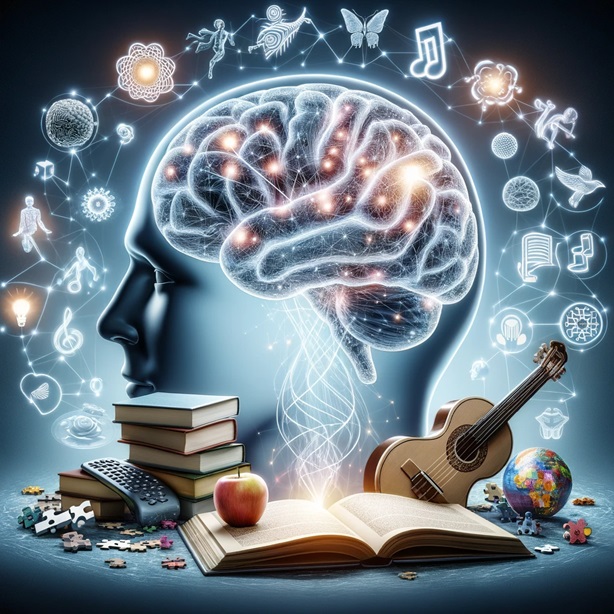Introduction to Neuroplasticity

The Phenomenon of Neuroplasticity
Neuroplasticity, or brain plasticity, refers to the brain’s ability to adapt and reorganize itself by forming new neural connections throughout life. This remarkable capability enables the brain to recover from injuries, adapt to new learning experiences, and compensate for aging. It underpins our ability to acquire new skills, store memories, and adjust to novel situations or environments.
The process of neuroplasticity involves various mechanisms, including the strengthening of existing connections, the creation of new pathways, and even the generation of new neurons, a process known as neurogenesis. These changes are influenced by several factors ranging from our daily activities, emotional states, and environmental stimuli to more profound occurrences such as brain injuries.
Scientifically, understanding neuroplasticity offers insights into the development of cognitive functions, the treatment of brain injuries, and the enhancement of learning abilities. Clinically, it is pivotal for rehabilitation strategies in conditions like stroke, traumatic brain injuries, and neurological diseases, where patients can regain lost functions through targeted brain exercises and therapies that exploit neuroplasticity.
The Role of Brain Training Games
Brain training games have become popular tools for encouraging neuroplasticity. These digital challenges are designed to enhance cognitive functions such as memory, problem-solving, attention, and processing speed. Engaging in these games regularly can lead to significant improvements in mental agility and can help maintain cognitive health in individuals of all ages.
For instance, memory training games often increase in complexity based on the user’s performance to ensure continual challenge and stimulation. This adaptive difficulty is crucial for fostering neuroplastic changes and preventing cognitive decline. Furthermore, many brain training games incorporate elements of speed and repetition, which can stimulate rapid synaptic connections and reinforce learning and memory.
Aside from their cognitive benefits, brain training games offer an engaging and enjoyable way to potentially delay or mitigate the effects of aging on the brain. They provide a low-stress, accessible method for users to enhance their mental fitness, making daily cognitive enhancement both fun and rewarding.
Neuroplasticity in Daily Life
Integrating neuroplastic-friendly activities into one’s daily routine is essential for cognitive health. Engaging in new and challenging activities like learning a new language, mastering a musical instrument, or solving complex puzzles can greatly stimulate the brain and enhance its plasticity.
Lifestyle factors also play a crucial role in supporting neuroplasticity. Nutrition, for instance, has a profound impact on brain health; diets rich in omega-3 fatty acids, antioxidants, and vitamins can foster an optimal environment for neural growth. Physical exercise increases blood flow to the brain, enhancing oxygen and nutrient supply which supports neurogenesis and synaptic plasticity. Similarly, quality sleep is essential for consolidating memories and removing toxins from the brain, which can affect overall brain health and plasticity.
Stress management is another critical aspect, as chronic stress can negatively affect brain function and inhibit neuroplasticity. Engaging in regular physical activity, mindfulness meditation, and social interactions can help manage stress and thus promote a healthier brain.
Lifelong Learning and Neuroplasticity
The concept of lifelong learning plays a fundamental role in maintaining cognitive vitality at any age. Continual learning and engagement in intellectually stimulating activities can stimulate neuroplasticity well into the later years of life. This ongoing synaptic activity not only helps in adapting to new challenges and environments but also in building a cognitive reserve to protect against future brain pathology.
Activities that involve complex communication, problem-solving, and social interaction are particularly beneficial as they engage multiple brain areas and functions. This multifaceted stimulation is thought to be most effective at promoting neuroplasticity, thereby enhancing and maintaining cognitive function over time.